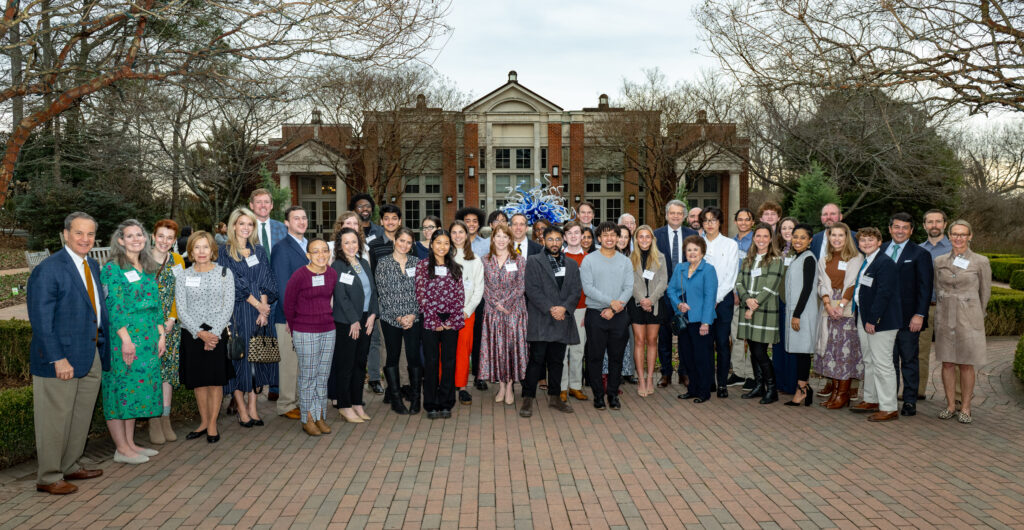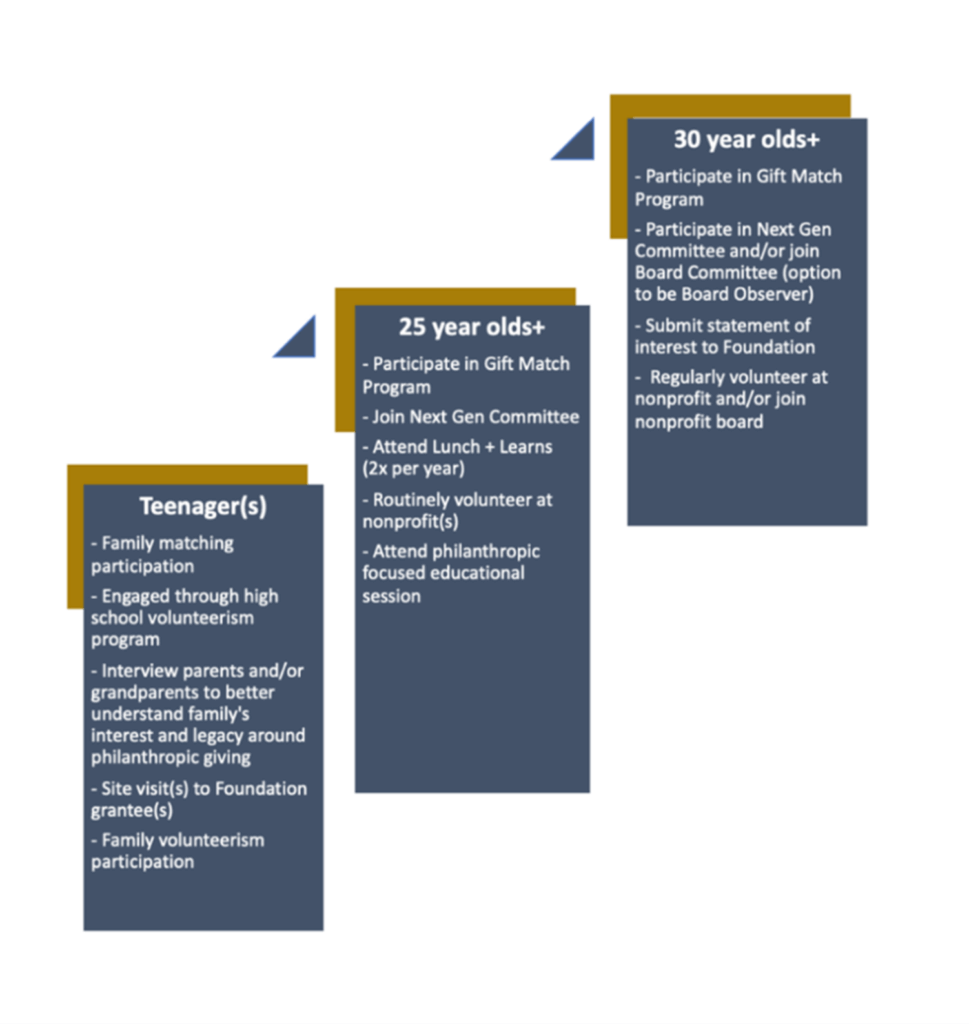Planning for Effective Next-Generation Engagement

Lanier Scholars from Vanderbilt University gathered with three generations of the Lanier family and trustees of the Sartain Lanier Family Foundation.
To improve its next-generation engagement and onboarding processes, the Sartain Lanier Family Foundation partnered with Grant Philanthropic Advisors to develop a ‘learning ladder’ that introduces the next generation to important skills and philanthropic knowledge and supports a smoother transition to board service.
In 2024, the Sartain Lanier Family Foundation had begun to see the impact of its recent strategic planning process and its third and fourth generations were leading the foundation in ways that demonstrated internal stability. Together with Grant Philanthropic Advisors (GPA), the trustees decided to set aside time to reflect on their own experiences joining the foundation and to think strategically about engaging the next generation. Their journey underscores that succession planning isn’t a one-time event, but an ongoing commitment to fostering family harmony and philanthropic impact.
Engaging the Next Generation Differently
From 2007 to 2017, third- and fourth-generation family members joined the board with limited knowledge of the foundation’s work, learning gradually as they served. After the second generation retired in 2021, these newer trustees launched a strategic-planning process and stepped into officer roles and committee leadership in 2022. They were onboarded into their new roles through a 12-week orientation process guided by staff members and GPA, which included an overview of the foundation’s governance and investment policies and practices, an exploration of their roles and responsibilities, and a thorough review at the foundation’s grantmaking. As they settled into their roles, the family trustees recognized the value in a more intentional engagement of the next generation. They aspired to outline a clear yet flexible path—one that would introduce their children to philanthropy, uphold the foundation’s values, and prioritize family harmony without becoming rigid or overly prescriptive. They began a process to discern big questions about the evolution of the composition of their board over time. They recognized two inevitabilities:
- The family branches will continue to grow.
- Lanier family members will likely live beyond Atlanta city limits.
Based on these facts, the family trustees wondered:
- How do we learn effective governing behaviors that facilitate family harmony and make community impact?
- What are the implications for board harmony as the family grows?
- How do we balance family branches on the board?
- How do we engage family trustees who may not live in Atlanta, where most of the grantmaking takes place?
- What needs to happen now to ensure our children can lead effectively in the coming decades?
The trustees met to unpack these questions and coalesced around a number of decisions including a minimum age for board service, the process for the next generation to express interest in board service, a matching gift policy for family members, how to balance branch representation in the future, and more.
The most tangible outcome of the process included a learning ladder that demonstrates how the foundation can engage the next generation before they join the board. The ladder distinguishes engagement activities by age group, beginning with teenage years and early 20s, then ages 25 and older, and finally ages 30 and older. As the ladder progresses, the ways to engage increase and involve more formal participation in the foundation. Parents will guide their children’s philanthropic learning journey until they turn 25. After that, foundation staff members will formally invite these family members to participate in engagement opportunities.

The Sartain Lanier Family Foundation’s learning ladder indicates the ways for the next generation to engage in philanthropy and the foundation’s activities beginning as teenagers.
The framework clarifies what opportunities are available for the next generation to engage in the foundation’s work and its activities aim to teach important philanthropic skills, ultimately providing a smoother transition to the trustee role. For example, new trustees are equipped with a stronger understanding about the governance practices of the foundation, how to make effective grants, and what it means to be a good partner to grantees.
The learning ladder also has benefits for the third- and fourth-generation leaders. In partnering with the younger generations prior to their board service, leaders can understand each individual’s interests, skills, and expertise to gauge which roles within the foundation might be most fitting. They can plan for the desired balance of family representation in the long term. And, most importantly, they can impart lessons, knowledge, and values to the next generation through meaningful work together.
Tips for Philanthropic Families to Plan for Next-Generation Engagement
Along the way we’ve identified some lessons that may be helpful for others:
- It’s never too early to engage your children in conversations about generosity, the community, and the broader family narrative. For the Lanier family trustees, the teen years felt natural to meaningfully engage family members in the work of the foundation.
- Test assumptions about how and why things are working, even if the foundation governance is working smoothly.
- Create a governance framework that supports the unique needs of the foundation and allows for flexibility and creativity to iterate.
- Consider using a board evaluation tool to understand how effective family trustees are being at next-generation engagement.
- Use the foundation staff members’ expertise to spark curiosity in each next generation member.
A Continuous Journey
As the Lanier family looks ahead, they recognize the foresight and planning needed to navigate the complexities of multigenerational philanthropy. Their experience highlights the importance of using times of stability to step back and reflect on future challenges and invest time and resources that can transform potential hurdles into opportunities for growth and deeper impact.
Kaky Grant is the principal of Grant Philanthropic Advisors
Patricia (Pat) Lummus is executive director of the Sartain Lanier Family Foundation
The views and opinions expressed in individual blog posts are those of the author(s) and do not necessarily reflect the official policy or position of the National Center for Family Philanthropy.
